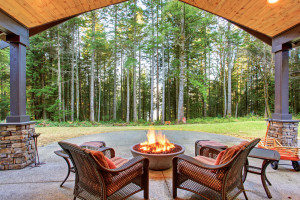 Summer days lead to cool nights that are perfect for cozying up to a warm fire with your family and friends. The smell of s’mores is in the air, and some of you may even be roasting your marshmallows the old fashioned way – on a stick. There is nothing more relaxing than hearing the crackle of firewood and the sound of laughter as you look up at the stars. There is also nothing more terrifying than a fire that has become unruly or is emitting noxious gasses due to the materials that are being burned.
Summer days lead to cool nights that are perfect for cozying up to a warm fire with your family and friends. The smell of s’mores is in the air, and some of you may even be roasting your marshmallows the old fashioned way – on a stick. There is nothing more relaxing than hearing the crackle of firewood and the sound of laughter as you look up at the stars. There is also nothing more terrifying than a fire that has become unruly or is emitting noxious gasses due to the materials that are being burned.
First and foremost, there are several guidelines that the city of Norwich has put together to regulate the types of fires that are lit in its residents’ backyards. The following are a few of these guidelines:
-You do not need a permit for: Small cooking fires, campfires, bonfires that do not threaten to create a forest fire, fires for training or construction purposes.
-Your fire is considered safe it is can be contained/maintained, does not emit a foul odor or generate an unusual abundance of smoke.
-You will need a permit to burn large amounts of brush.
As you can see, you are legally allowed to have a fire in your backyard, toast your marshmallows and sing campfire songs with your loved ones without needing to submit a permit. However, this does not mean that small campfires do not pose threats. To keep yourself, your family, and your friends safe this summer, here are a few tips:
-Set up your fire pit at least 15 feet away from your home or any other structure – be even more careful if there are winds.
-Be sure to clear the ground around your fire pit of dry leaves or twigs. This will make your fire less likely to spread.
-When starting a fire, it is important to use proper materials. If your firewood is completely dry, it should catch quickly. If you are having trouble starting your fire and want to use other types of kindling, like paper, make sure that it is secured inside a nest of wood so that hot ash cannot escape freely. Secondly, try to avoid using lighter fluid or gasoline to start your fire. You can purchase or create DIY fire starters that are safe and easy to use.
-While you are enjoying your campfire, be sure to keep foreign objects out of it. It is common to feel the urge to throw an object into the fire, but some objects can and do explode when heated. To be safe, it is better to fight the urge to experiment than to burn your guests or yourself.
If you do end up having an accident at your next backyard get-together, or are wondering how to get coverage just in case something does happen, feel free to contact Waitte’s Insurance Agency for all of your insurance inquiries.
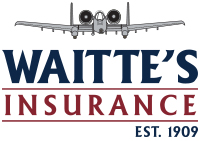
 Aggressive dogs pose serious threats to the community and are far more prevalent than one would think. In 2013, one-third of all homeowners’ insurance liability claims paid was due to dog bite claims. Families with “bully breed” dogs, such as pit bulls and Rottweilers may find themselves unable to obtain homeowner’s insurance or having to pay higher premiums as these dogs have higher aggressiveness statistics. Dog attacks can be prevented by appropriate training and raising of the dog. It’s important to understand some key dog-training principles to raise a safe, friendly dog.
Aggressive dogs pose serious threats to the community and are far more prevalent than one would think. In 2013, one-third of all homeowners’ insurance liability claims paid was due to dog bite claims. Families with “bully breed” dogs, such as pit bulls and Rottweilers may find themselves unable to obtain homeowner’s insurance or having to pay higher premiums as these dogs have higher aggressiveness statistics. Dog attacks can be prevented by appropriate training and raising of the dog. It’s important to understand some key dog-training principles to raise a safe, friendly dog.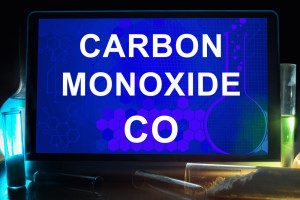 While most people know that homes are required by law to have smoke detectors, which quickly sense smoke in case of a fire and alert the residents to ensure a quick response, fewer know that the law also requires carbon monoxide detectors. That’s because carbon monoxide is a lesser-known danger than fire – but, in some cases, a much more potent one.
While most people know that homes are required by law to have smoke detectors, which quickly sense smoke in case of a fire and alert the residents to ensure a quick response, fewer know that the law also requires carbon monoxide detectors. That’s because carbon monoxide is a lesser-known danger than fire – but, in some cases, a much more potent one. Chances are you couldn’t wait to get your driver’s license when you turned 16. However, you probably never guessed that there would be so many steps you had to take before you could get on the road, or that even after receiving your license, you still have to navigate numerous laws and restrictions until you turn 18. Teen driving may be difficult, but this guide can help clarify a few questions you may have.
Chances are you couldn’t wait to get your driver’s license when you turned 16. However, you probably never guessed that there would be so many steps you had to take before you could get on the road, or that even after receiving your license, you still have to navigate numerous laws and restrictions until you turn 18. Teen driving may be difficult, but this guide can help clarify a few questions you may have.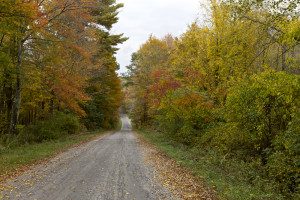 Every fall, while the rest of the country is lamenting the end of summer and dreading the coming of winter, New England is experiencing a uniquely beautiful experience – the gradual shift from summer to fall foliage throughout the region’s forests. This seasonal event brings vibrant hues of red, orange, and yellow to the leaves of trees throughout the state of Connecticut, and because of their widespread nature, the best way to enjoy them is by car. Thankfully, the state is full of scenic routes, all of which become even more beautiful in fall when the leaves change color. This fall, head out for a drive along these top five scenic routes:
Every fall, while the rest of the country is lamenting the end of summer and dreading the coming of winter, New England is experiencing a uniquely beautiful experience – the gradual shift from summer to fall foliage throughout the region’s forests. This seasonal event brings vibrant hues of red, orange, and yellow to the leaves of trees throughout the state of Connecticut, and because of their widespread nature, the best way to enjoy them is by car. Thankfully, the state is full of scenic routes, all of which become even more beautiful in fall when the leaves change color. This fall, head out for a drive along these top five scenic routes: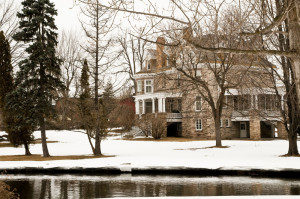 As the days grow shorter and the air grows colder, people around the country experience the telltale signs of the fall season. Along with the approach of the holidays and the changing color of the leaves, however, you can also expect unpredictable weather patterns; from sudden storms to early snowfall. Especially in New England, there is no telling when temperatures may drastically drop – an event that can have significant impacts on your home.
As the days grow shorter and the air grows colder, people around the country experience the telltale signs of the fall season. Along with the approach of the holidays and the changing color of the leaves, however, you can also expect unpredictable weather patterns; from sudden storms to early snowfall. Especially in New England, there is no telling when temperatures may drastically drop – an event that can have significant impacts on your home.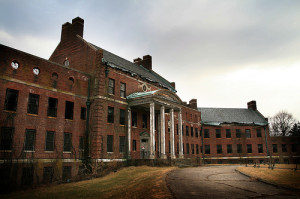 As one of the first areas to be colonized by European settlers, as well as the site of Native American activity for thousands of years, it comes as no surprise that Connecticut has a long and storied history – and where there is history, there are hauntings. Today, with Halloween approaching, you can visit numerous haunted sites across the state, absorbing the atmosphere and quite possibly getting the scare of your life. However, even among Connecticut’s many haunted places, there are a few that stand out for being exceptionally spooky. Take a look at 5 of the most haunted places in Connecticut.
As one of the first areas to be colonized by European settlers, as well as the site of Native American activity for thousands of years, it comes as no surprise that Connecticut has a long and storied history – and where there is history, there are hauntings. Today, with Halloween approaching, you can visit numerous haunted sites across the state, absorbing the atmosphere and quite possibly getting the scare of your life. However, even among Connecticut’s many haunted places, there are a few that stand out for being exceptionally spooky. Take a look at 5 of the most haunted places in Connecticut.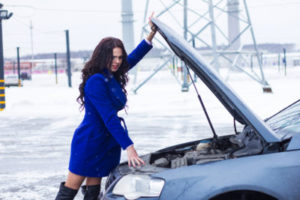 In New England, fall is in full force; the leaves have changed colors, Thanksgiving preparations have begun, and the air is slowly getting colder and colder as winter approaches. While these changes may signal the approach of the holiday season, however, the colder weather also signifies another change: the increased danger to your car or other vehicles.
In New England, fall is in full force; the leaves have changed colors, Thanksgiving preparations have begun, and the air is slowly getting colder and colder as winter approaches. While these changes may signal the approach of the holiday season, however, the colder weather also signifies another change: the increased danger to your car or other vehicles. Thanksgiving is a holiday that all family members can share in and enjoy; it is the one time of year when your entire family can come together, sometimes from all areas of the nation and beyond. However, the importance of Thanksgiving as a holiday can only be matched by the importance of staying safe and vigilant; because it is such a prominent holiday, there are many more dangers during this time that people don’t experience during the rest of the year. Thankfully, by taking preventative measures, you can provide a safe Thanksgiving every single year.
Thanksgiving is a holiday that all family members can share in and enjoy; it is the one time of year when your entire family can come together, sometimes from all areas of the nation and beyond. However, the importance of Thanksgiving as a holiday can only be matched by the importance of staying safe and vigilant; because it is such a prominent holiday, there are many more dangers during this time that people don’t experience during the rest of the year. Thankfully, by taking preventative measures, you can provide a safe Thanksgiving every single year.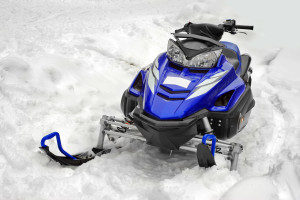 As December sets in, it’s just a matter of time until snowfall hits Connecticut, which means that it’s time to prepare your snowmobile and understand the laws attached to using it. Thankfully, snowmobiles can be extremely helpful and easy to use, as long as you understand the rules and restrictions that you need to follow.
As December sets in, it’s just a matter of time until snowfall hits Connecticut, which means that it’s time to prepare your snowmobile and understand the laws attached to using it. Thankfully, snowmobiles can be extremely helpful and easy to use, as long as you understand the rules and restrictions that you need to follow.